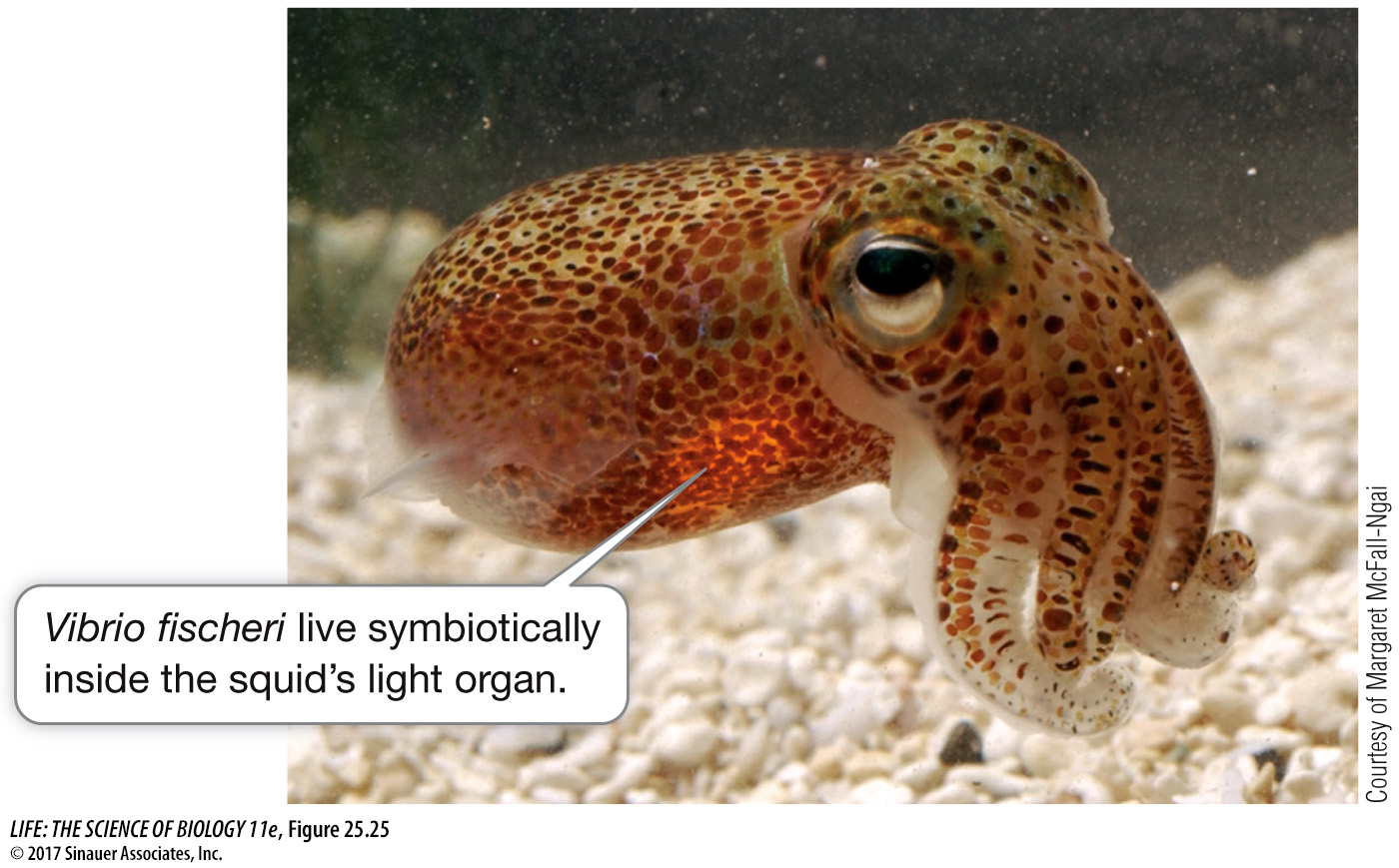Investigating Life
investigating life
How and why do bacteria communicate with one another?
As we explored in Investigating Life: How Do Bacteria Communicate with One Another?, Vibrio bacteria send a chemical signal that is received by other bacteria. This signal is needed to produce bioluminescence. As Vibrio populations increase in density, the bioluminescence becomes strong enough to be visible to humans and other animals. But how is bioluminescence an advantage to the bacteria? What is its function?
Although marine Vibrio are able to live independently, they truly thrive inside the guts of fish and other marine animals. Inside a fish, Vibrio cells attach themselves to food particles, including phytoplankton, and are often expelled into the ocean as waste. How can they get back into their preferred environment? The bioluminescent glow produced by a dense colony of free-
The bioluminescent Vibrio described in Investigating Life: How Do Bacteria Communicate with One Another?, V. fischeri, have evolved a symbiotic relationship with the Hawaiian bobtail squid (Euprymna scolopes). Chemicals produced by a developing squid embryo specifically “recruit” V. fischeri from the surrounding seawater. The bacteria then preferentially migrate to specific tissues that develop into a bioluminescent “light organ” in the belly of the adult squid (Figure 25.25). The tiny (about 3 cm long) adult squid feed while floating near the sea surface at night. The soft glow produced by the bioluminescent bacteria mimics the moonlight above, so the squid are less visible to potential predators coming at them from below.

550
Future directions
Research that helps biologists understand how bacteria communicate, and allows us to disrupt or change communication signals among bacteria, is critical for developing treatment strategies against persistent bacterial infections. In the case of health-